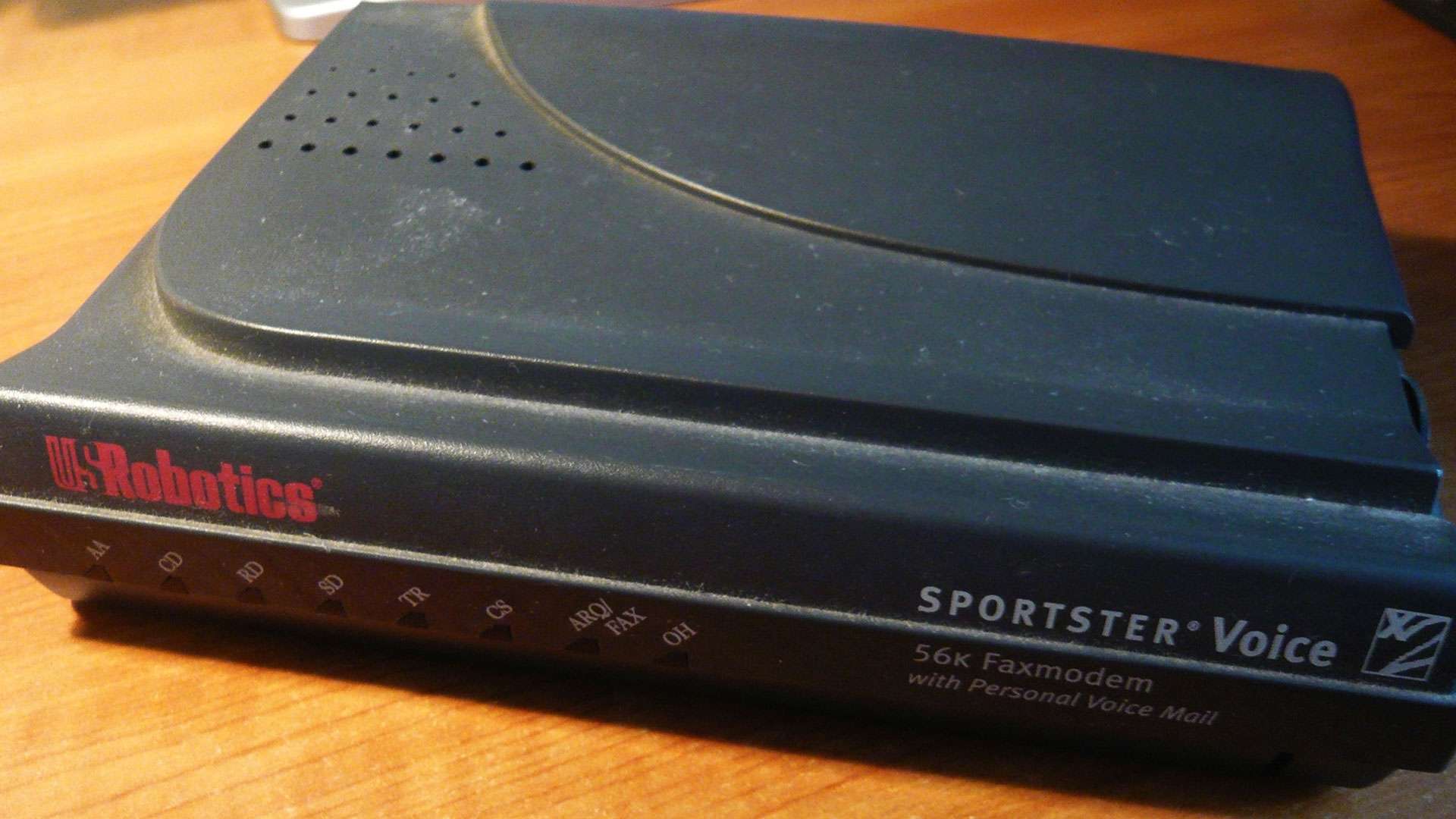AOL's dial-up internet service killed with a final modem screech after 34 years — America Online goes offline this week, but other dial-up services still exist
But there are other dial-up ISP still around, and you can still use your modem for BBS access, or its fax functionality.

A few weeks ago, we warned that a ‘routine evaluation’ of its business had triggered AOL’s decision to discontinue its 34-years established dial-up internet service. The fateful day came and went this week. As we bid September farewell and moved into the 10th month of 2025, AOL’s dial-up service stopped picking up the line for its last remaining screechy modem-toting customers.
Not only was AOL’s dial-up Public Switched Telephone Network (PSTN)-based internet connectivity service shut down mid-week, the AOL Dialer software and AOL Shield browser were also laid to rest.
Originally known as America Online, AOL became many a fresh World Wide Web surfer’s first home. It was the biggest internet service provider (ISP) in the US in the late 1990s to early 2000s. Stats show that, at its height, the service enjoyed over 35 million subscribers. Of course, we know it pivoted to providing broadband, along with all its rivals, as we progressed into the new information age. With the rapid pace of technological change, and thirst for greater bandwidth and always-on connectivity, by the time we entered the 2010s AOL’s dial-up offering had plummeted in popularity so far as to become a niche service.
It is worth repeating the officially stated reasons behind the closure of the service. Back in August, AOL said that it “routinely evaluates its products and services and has decided to discontinue Dial-up Internet.” We don’t know how many customers were hanging onto this particular service for the internet needs. However, the latest U.S. census figures we could find indicate that about a quarter of a million users were dial-up hold-outs. Most of these folks may have limited choices due to their rural or remote homesteads.
Alternative ISPs and dial-up modem uses
In the U.S., there are still some ISPs which can make good use of your old U.S. Robotics Sportster 56K or Diamond SupraExpress (there are other modem brands). The biggest name alternative would be MSN Dial-Up, which Microsoft sells for $21.95 a month or $179.95 per annum. There are also dial-up services offered by NetZero and Juno. Your service choice might depend on your location. But surely AOL dial-up’s demise will push some to finally take the plunge into broadband or wireless alternatives like 4G/5G or satellite broadband.
If you do decide to take the plunge into broadband after being pushed off the plank by AOL, your trusty old modem can still be useful. Remember, your screechy old friend can be used for faxes, for Bulletin Board Systems (BBS) access, and some other niche pursuits.
Recently, we also had the pleasure of seeing a pair of network enthusiasts bond twelve 56K modems together to set dial-up broadband records. They managed to achieve record 668 kbps download speeds using Multilink PPP (MPPP) technology.
Get Tom's Hardware's best news and in-depth reviews, straight to your inbox.
Follow Tom's Hardware on Google News, or add us as a preferred source, to get our up-to-date news, analysis, and reviews in your feeds. Make sure to click the Follow button!

Mark Tyson is a news editor at Tom's Hardware. He enjoys covering the full breadth of PC tech; from business and semiconductor design to products approaching the edge of reason.
-
Pemalite I guess with Starlink coverage giving me 200Mb/s in the middle of Australia, 750 miles from the nearest person/town, thus there is no 3G/4G/5G or ADSL/VDSL/Fiber there really is no point having dial up anymore.Reply
Plus the web is very image and script heavy these days and some pages can average around 3MB in size, which can take a good 20-30 minutes to load on a 56k dial up connection unless you use compression. -
davidjkay Its doable depending on needs... turn off automatic image loading, click to load a specific image, stick to email and text based web pages... its better than nothing.Reply
Normally even sharing data link from cell phone would be better option on cheap end -
davidjkay I can get cell phone plan with lots of data for cheaper than land line and dial up connection and it works almost anywhere...Reply
But maybe some of these people are so remote that cell doesn't work and they need a landline anyways and don't need enough internet to justify starlink.
A dial up connect can be shared... one guy has plan and his friends phone him up to ask to borrow it for an hour when they need and that way everyone can at least do email -
abufrejoval It's funny how small causes can make huge economic and cultural differences long term.Reply
Here in Germany even local calls were billed by time basically until telephony itself ran on the Internet. So when the first variants of DSL arrived with the new millenium, which billed by bandwidth (and never by volume or time), dial-up Internet must have died a pretty near instant death, since you paid twice (TelCo and Internet provider) and had the worst connection. Modem farms were also pretty expensive to operate on the other side, so providers were quick to ditch them, too. I don't think I even remember how to make a modem work any more... Didn't they use dial codes for all kinds of speed settings?
Actually, now that I think back, there was a small ISDN interlude... Don't think that was ever a thing outside Europe.
But then I was lucky enough not to live in some remote village.
I also remember that it was different while I still lived in (West-)Berlin, where local calls were exceptionally not timed but billed per call. That's when I had two phone lines, one for talking, the other was permanently connected to the university dial-in line to link my Apple ]
-
voyteck Replyhe biggest name alternative would be MSN Dial-Up, which Microsoft sells for $21.95 a month or $179.95 per annum.
What? It's twice as much as I pay for fibre 600/150 Mbps... And I thought I should have negotiated something faster at that price when renewing :)
I checked broadband access prices in US and it doesn't seem that expensive now. They spend 63 dollars per month on average. Crazy. It's 3x more than the monthly cost of the first DSL in my country in 2001 (adjusted for the dollar price at that time).